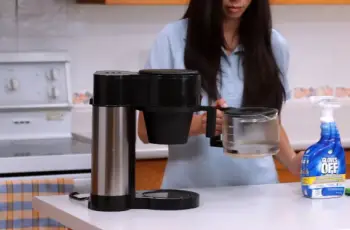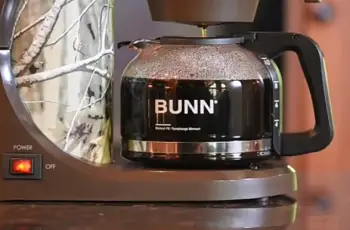The life span of a coffee maker can vary greatly. Some people can use the same coffee maker for decades, while other machines last only a few years. Things like the coffee maker are often used, its quality and routine maintenance are just a few of the many factors that you can trust to know how long before you need to replace your reliable machine.
The funny thing about coffee makers is that the unit that is easier and cheaper usually lasts longer. Basic drip coffee makers have no moving parts, no electronics, no fancy water pumps. They are just simple machines that work on a large scale due to physics. A heating coil (metal tube) heats the water under the hot plate under the device and then simple physics forces it to move to the top of the machine where it cooks coffee.
How Long Does a Coffee Maker Last?
My first pot lasted for 10 years and it could have lasted a lot longer… especially if I had taken the time to keep it well cleaned on the inside too. I never actually descaled that machine in all 10-years that I owned it! Unbelievable! It was a simple pot with a digital clock display and a simple programmable timer. It wasn’t as simple as some really low-end machines but it sure didn’t have many bells and whistles either.
What it did have however was a totally standard design that is largely unchanged from every other drip coffee machine. The reservoir of water in the back feeds down a tube to the heater coil. The heater heats the water to boiling and then steam and physics bring the superheated water through the next phase of the tube to the showerhead.
Typical coffee makers actually have no real moving parts. It’s just a stationary heating element that relies on physics to move water through the machine all the way to your carafe of brewed coffee. Assuming the heating element keeps working, as it should for many years, the coffee machine should work just fine for a decade or more. Usually, if no blunt damage is inflicted on an automatic coffee maker, they will work for many years and the first things to stop working are the electronics that run the digital displays or buttons.
Do Expensive Coffee Makers Last Longer?
Some really high-end machines (regardless of price) just aren’t going to make it that long. Their heating elements will work fine but everything else will be faster to fail because of the additional complexity of electronics. Keurig machines for instance cost more than basic drip machines but they use water pumps to move water from the reservoir to the k-cup and they never last as long as a basic drip machine.
Truth be told simple is almost always better in my book. The fewer parts (and the fewer moving parts especially) the longer the machine will last. Barebones coffee pots are no more than a simple heating element and tubing. Expensive grind-and-brew pots with separate chambers for hot water on demand or for making specialty coffee drinks just complicate the machine.
I’m not saying they aren’t worth the money; I’m just saying they aren’t going to last as long no matter how well they are made. If you need a good rule of thumb keeps this in mind. A well-made basic coffee pot will probably last more than a decade even if you don’t take great care of it. On the other hand, the high-end complicated machines are going to be much more sensitive to the quality of construction when it comes to their lifespan and they will be far more sensitive to your regular maintenance.
If you don’t care to clean and maintain a fancy machine then don’t expect it to last very long… and if it’s a cheap (but fancy) coffee maker with all the bells and whistles you may not make it long at all without regular maintenance. And even then it’s a bit of a gamble. Rule of thumb I place my bets on a well-maintained coffee pot lasting anywhere from 3-10 years on average depending on the simplicity of the design. Simpler designs will last longer.
What Makes A Coffee Maker Last?
A coffee maker’s life expectancy depends on how you take care of it
The lifespan of a coffee maker is determined by the quality of its materials, the amount of coffee you brew, and the maintenance steps that you take when the machine isn’t in use. Cuisinart coffee makers have a solid construction and won’t typically break because of a manufacturer defect. This means that if your machine lasts for less than 3 years, it might be because you don’t take care of it between brews.
In general, you should clean your coffee maker once a month. If you brew a lot of coffee, you might want to clean it on a weekly or bi-weekly basis instead. Cleaning your machine removes mineral buildups that might prevent water from flowing out of the reservoir and into the filter basket. Another way to improve the lifespan of your coffee maker is to unplug the machine when it’s not in use. Leaving your coffee maker plugged in will send a steady stream of electricity through the coil. This will eventually damage the wires and prevent the machine from heating like normal.
Finally, always make sure you follow the manufacturer’s instructions. Some coffee machines need to warm up before use, and others have to rest between brewing cycles. Read your instruction manual carefully, and keep it around to reference in case of problems. It’s interesting to note that simpler coffee makers typically last longer than more complicated machines. This is because a machine with more parts has a greater chance of breaking during normal use.
If you choose the Cuisinart Grind & Brew, you have to worry about both the grinder and the heating element breaking over time. If you just go with the Programmable 12-Cup Coffee Maker, you only have to worry about the heating element. Luckily, Cuisinart makes great products, and they won’t break if you treat them well.


